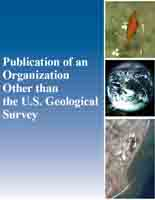Functional traits explain waterbirds’ host status, subtype richness, and community-level infection risk for avian influenza
Links
- More information: Publisher Index Page (via DOI)
- Open Access Version: Publisher Index Page
- Download citation as: RIS | Dublin Core
Abstract
Species functional traits can influence pathogen transmission processes, and consequently affect species' host status, pathogen diversity, and community-level infection risk. We here investigated, for 143 European waterbird species, effects of functional traits on host status and pathogen diversity (subtype richness) for avian influenza virus at species level. We then explored the association between functional diversity and HPAI H5Nx occurrence at the community level for 2016/17 and 2021/22 epidemics in Europe. We found that both host status and subtype richness were shaped by several traits, such as diet guild and dispersal ability, and that the community-weighted means of these traits were also correlated with community-level risk of H5Nx occurrence. Moreover, functional divergence was negatively associated with H5Nx occurrence, indicating that functional diversity can reduce infection risk. Our findings highlight the value of integrating trait-based ecology into the framework of diversity–disease relationship, and provide new insights for HPAI prediction and prevention.
| Publication type | Article |
|---|---|
| Publication Subtype | Journal Article |
| Title | Functional traits explain waterbirds’ host status, subtype richness, and community-level infection risk for avian influenza |
| Series title | Ecology Letters |
| DOI | 10.1111/ele.14294 |
| Volume | 26 |
| Issue | 10 |
| Publication Date | August 16, 2023 |
| Year Published | 2023 |
| Language | English |
| Publisher | Wiley |
| Contributing office(s) | Eastern Ecological Science Center |
| Description | 12 p. |
| First page | 1780 |
| Last page | 1791 |


